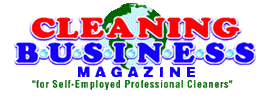Bidding and Estimating Hard Floor Care
Every building has a floor and sooner or later it will need more than daily or routine cleaning to remove heavy soil, scratches, scuffs and restore that like new shine. Hard floor care is one of the most profitable service specialties and if you ask for the work, is often an automatic add on for janitorial and residential cleaning services. If you have the skills, staff and equipment needed to provide periodic and restorative maintenance and your price is reasonable, chances are you will get the work. Sometimes floor care is included in the contract, but many times, floor care provides an opportunity for additional income and profit. If you can’t personally do the work, consider subcontracting with another company to provide the service and add 20%-40% to the cost as your markup for managing the project.
Pricing Hard Floor Care
Common approaches to pricing floor care include time and materials (cost plus) or fixed rate, which can be calculated by the hour, square foot or area. A number of software programs are available to assist with pricing, scheduling and cost analysis. The International Sanitary Supply Association (ISSA.com) and other industry trade associations offer production guidelines and procedural manuals related to hard floor care.
Tips for Accurate Bidding and Estimating:
- Bid small jobs to start with. You can’t lose too much money on a small job, even if your numbers are wrong. This is the best way to protect yourself from large losses and improve your estimating skills related to labor and supply costs as well as production rates. It’s the large and complicated jobs where the risk is much greater and your numbers need to be more precise. With a little practice, you’ll get the hang of it pretty quickly.
- Keep accurate written records on all bids. This will help you refine your estimating formula and analysis of costs and profit on each job. Refer to this information when bidding accounts in the future that are similar in size and services offered.
- Develop your own numbers. Industry standards, including production rates and costs found in off the shelf software programs and manuals should only be used as a guideline, reference or starting place. The only truly accurate numbers are those developed by you for your business. Don’t worry about the completion, focus on your costs, profit and meeting the customers needs and you’ll do just fine.
- Test, Test, Test. Test cleaning and finishing a small area (4 inches by 4 inches max.) is the only way to determine what it will really take to clean and restore a floor to an acceptable condition. Cleaning a small test area by hand will help you determine which product and process to use. Once you figure out which chemicals to use and how to do the work, expand the test area to 4 ft. x 4 ft. Completing this larger test area will help you accurately estimate labor and supply costs for the entire job. Unless you have been maintaining a building for several years, you don’t know what others may have applied to the floor or what it will take to remove it. Certain types of sealers, finishes, nano-coatings, urethanes and epoxies are difficult and in some cases impossible to remove by chemical stripping. This is easy to determine before you start the job and will save you a lot of time and money and trouble, if you follow the test procedure outlined above.
New Technology
It is important to learn about emerging trends that will over time eliminate the need for stripping, burnishing and refinishing of new and common floor covering materials. Micro-fiber flat mops, green/sustainable chemicals and processes, robotics, nano-coatings, engineered water and finish free surfaces are just a few of the advances that will revolutionize the way we clean, maintain and restore hard floor coverings in the future. With these changes you can expect to see higher production and lower cost per square foot rates for the cleaning and maintenance of hard floors.
Although floor coverings, along with the equipment and chemicals used to maintain them are evolving quickly, a window of opportunity exists for at least another 5 – 10 years, where traditional floor care will still be used in many types of facilities.
Resources
The Institute of Inspection, Cleaning and Restoration Certification (IICRC.org) offers industry standards and independent third party training and certification as a Care Technician (FCT) or a Stone, Marble and Tile Technician (SMT). Cleaning Management Institute (CMI), your local sanitary supply distributor and most equipment and chemical manufacturers offer classes, on line and printed training materials and in some cases onsite hands on training for your custodial staff. Don’t overlook these valuable industry resources when you have questions or need support regarding hard floor care.
Search engine research will provide a wide range of information and training resources for all types of floor care including wood, concrete, rubber and other specialty surfaces found in residential, commercial and industrial locations.
















